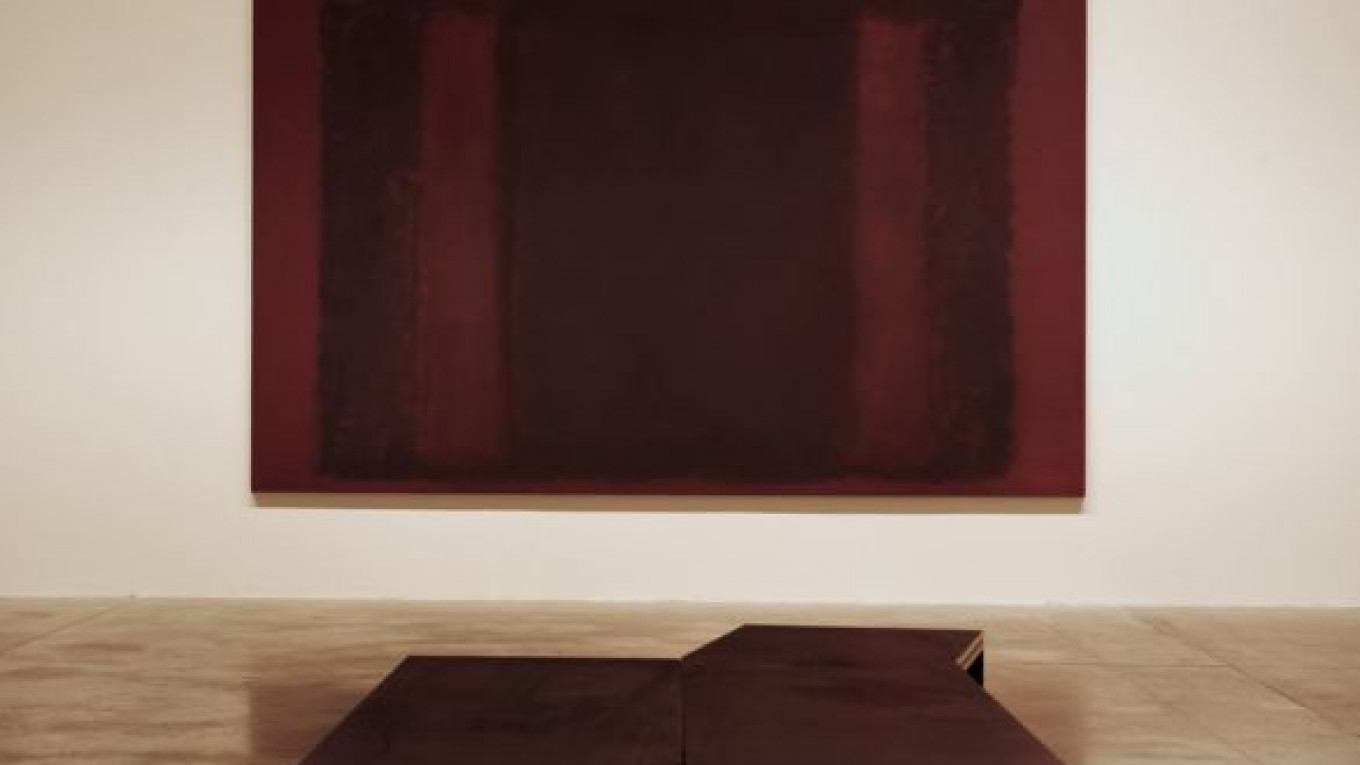Moscow meets Mark Rothko for the first time at a large-scale exhibition at the Garage Center for Contemporary Culture displaying the largest private collection of his work in the world.
“I have always dreamed of bringing an exhibit of Mark Rothko to Moscow. Thanks to the existence of the Garage, this has become possible,” Garage owner Daria Zhukova said at a news conference before the opening last Thursday.
The exhibit’s title, “Mark Rothko: Into an Unknown World,” quotes a manifesto Rothko wrote with artists Adolph Gottlieb and Barnett Newman in 1943 describing art as “an adventure into an unknown world, which can be explored only by those willing to take the risks.”
Rothko was a core member of the New York School, which replaced the School of Paris as the cutting edge of the avant-garde in the late 1940s. In his early work, Rothko had explored surrealism and symbolism, painting scenes of everyday life and, later, mythology, but in the late 1940s, he broke with representation. Large patches of color became Rothko’s signature style. He made the pictorial space shallow and covered each canvas with a hovering rectangular figure in thin, luminous color. The largeness of his canvases engulfed the viewer.
In a 1958 lecture, Rothko recalled, “It was with the utmost reluctance that I found the figure could not serve my purposes … But a time came when none of us could use the figure without mutilating it.”
“In part, [Rothko] was reacting against the cubism of Picasso and the abstract cubism of Mondrian, a kind of art in which Picasso and Mondrian took different shapes and related them together to create a kind of structure in the work. Rothko got rid of that structure. He wanted an all-over painting, a holistic painting that seemed also to expand,” said Dr. Irving Sandler, art critic, historian and Professor Emeritus of the State University of New York at Purchase, who took part in the opening of the exhibition.
“What he came up with was an entirely new painting, as did three of his associates, his fellow artists Jackson Pollock in one way, Barnett Newman and Clyfford Still in another way,” Sandler said.
The 13 paintings on display in the Garage’s new gallery span the 20 years of the artist’s mature period, 1949-1969. Included are studies for all three of Rothko’s famous mural projects: the Seagram Murals for the restaurant of the Seagram Building in New York, murals for the Holyoke Center at Harvard University and for the Rothko Chapel at the University of St. Thomas in Houston. A gray and black painting that Rothko completed shortly before his suicide in early 1970 is also on show.
“My understanding about [the paintings] is that they were put together over a number of years and selected from the best of what was in the Rothko estate after his death,” said Mollie Dent-Brocklehurst, international curator for the Garage. She said the paintings had never been shown together.
Dim lighting in the gallery matches Rothko’s own desires for how his work should be exhibited, Sandler explained. At a retrospective at New York’s Museum of Modern Art, Rothko legendarily would arrive early and turn down the lights before the curators would turn them back up.
“His conception of what his painting was about is that it was tragic, and he didn’t want it to look beautiful in a bright light,” Sandler said.
Sandler was a friend of Rothko and described him as “avuncular,” although his art revealed the depths of his depression.
“He is generally represented as a very dour, somewhat depressed man, and I think in many ways he was, because he and his art were responding to tragic events in his life and particularly to tragic events in the world: World War II, the Cold War, and then health problems,” Sandler said.
As seen in the Garage exhibition, Rothko’s canvases darken over the years, with his final works devoid of color.
“His work is very spiritual. It’s lacking subject matter, but it’s about reaching into another dimension. There are different interpretations of him, but for me it’s about transcendence, beauty and otherworldliness,” Dent-Brocklehurst said.
Rothko was born in Dvinsk, Russia (now Daugavpils, Latvia), and the influence of his Russian heritage on his work is debated. Sandler denied any Russian influence on Rothko’s composition.
“I don’t think there would have been influences by Russian artists. Possibly the closest might be the ‘White on White’ canvas of Malevich … To my knowledge, Rothko didn’t talk about Russian art as a source for his work.”
“Mark Rothko: Into an Unknown World” runs at the Garage Center for Contemporary Culture until Aug. 14. 19A Ulitsa Obraztsova. Metro Novoslobodskaya, Mendeleyevskaya. Tel. 645-0520, www.garageccc.com.
A Message from The Moscow Times:
Dear readers,
We are facing unprecedented challenges. Russia's Prosecutor General's Office has designated The Moscow Times as an "undesirable" organization, criminalizing our work and putting our staff at risk of prosecution. This follows our earlier unjust labeling as a "foreign agent."
These actions are direct attempts to silence independent journalism in Russia. The authorities claim our work "discredits the decisions of the Russian leadership." We see things differently: we strive to provide accurate, unbiased reporting on Russia.
We, the journalists of The Moscow Times, refuse to be silenced. But to continue our work, we need your help.
Your support, no matter how small, makes a world of difference. If you can, please support us monthly starting from just $2. It's quick to set up, and every contribution makes a significant impact.
By supporting The Moscow Times, you're defending open, independent journalism in the face of repression. Thank you for standing with us.
Remind me later.


